#rust and bone
Favourite Artist of the moment: Matthias Schoenaerts

Let’s talk about Matthias Schoenaerts. In my spacious and enduring ‘crush’ kingdom, I have always been unintentionally assembling people from various scenes and backgrounds ranging from sports to music. I admit that many times, I selfishly and shamelessly focus on the appearance and charm of my ‘victims’, and despite the particular type of indulgence that inevitably takes place, there are…
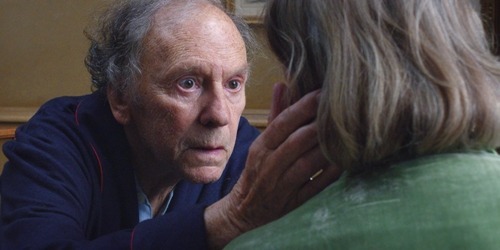
1.Amour (Michael Haneke)
This masterful ode to death and dying is every bit as uncomfortable and unflinching as Michael Haneke’s sombre reputation suggests, but by adding a new found warmth to his repertoire, Amour is a film made remarkable in its simultaneously brutal and tender depiction of humanity.

2. The Master (Paul Thomas Anderson)
Paul Thomas Anderson’s latest opus offers, among other things, an intensive study of men who lead and men looking to be led in post-war America. This cerebral approach to character makes for fascinating cinema, and although its mysteries may ultimately evade, The Master is as breathless a film as one would expect from America’s greatest showman.

3.Tiny Furniture (Lena Dunham)
Building on the already solid foundations of mumblecore with the wit of Woody Allen, Lena Dunham’s painfully frank film about life after graduation is a thoroughly modern and disturbingly relatable examination of alienated youth and wasted talent.

4.Rust and Bone (Jacques Audiard)
Jacques Audiard’s exquisite take on melodrama observes the blossoming relationship between a security guard and a whale trainer in the wake of a career-ending tragedy, but instead of descending into mawkishness, Audiard’s well judged restraint grounds the film in some kind of reality, allowing the central romance to develop in an organic, unsentimental way.

5.The Innkeepers (Ti West)
By combining the twin terrors of ghost stories and existential crises, Ti West has found the perfect home for the thematic concerns of the mumblecore movement with a film that not only functions as A grade horror, but also as a terrifying parable for the modern youth.
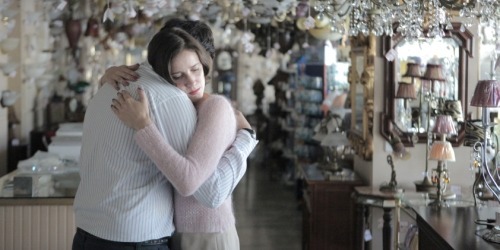
6.Alps (Yorgos Lanthimos)
The Hitchcockian idea of using doppelgangers to help appease grief is an inherently sick one, and Lanthimos’ steady, distant observations of how the frailties of such a process begin to surface are, while elusive, as morbidly fascinating as they are troubling.
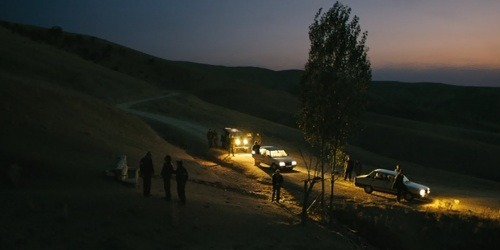
7. Once Upon A Time In Anatolia (Nuri Bilge Ceylan)
With its long, glacial takes, stunning photography and startlingly calm approach to narrative and character, Once Upon A Time In Anatolia offers an unusually lyrical, thematically rich take on the police procedural sub-genre.

8.Laurence Anyways (Xavier Dolan)
The epitome of a hot mess, Xavier Dolan’s vivid dissection of transsexuality, romance and heartbreak is a gorgeously presented, decade spanning emotional epic reminiscent of the work of Pedro Almodovar, and although it lacks control, its bombastic style is more than enough to sustain its ambition.
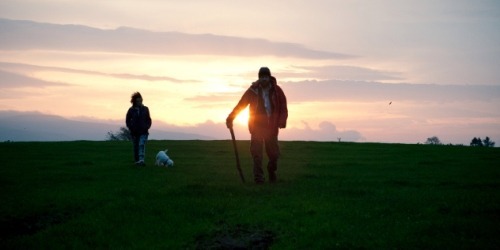
9.Sightseers (Ben Wheatley)
Taking cues from Badlands and the films of Mike Leigh, Ben Wheatley’s third film in as many years is an unabashedly violent, romantic and hilarious romp through the English countryside, blending horror and comedy to wonderful, if wholly British effect.
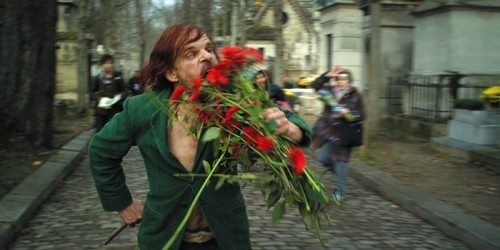
10.Holy Motors (Leos Carax)
Leos Carax’s brazenly opaque oddity almost didn’t make this list, with its absurd, often hideous images serving to baffle rather than engage. But, for better or for worse, Holy Motors has stayed with me more than any other film this year, and that surely has to mean something.
.
NOTE:This list is based on UK release dates.
“ I wanted to say…
Don’t hang up.. Don’t hang up…
For 3 hours… he’s been in a coma. He was dead for 3 hours.
I was so afraid I would lose him.
Don’t let me down.
(pause)
I love you.”
-Rust and Bone (De rouille et d'os) dir. Jacques Audiard, 2012
Post link
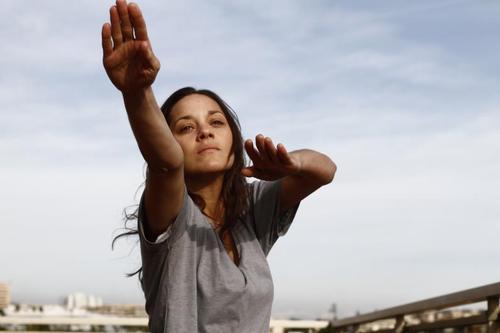
Three years after the release of riveting prison thriller, ‘A Prophet’, director Jacques Audiard and screenwriter Thomas Bidegain team up again for 'Rust and Bone’. A brutal and stunning love story starring Marion Cotiillard and Matthias Schoenaerts, it follows a bear knuckle fighter and whale trainer who are brought together following a devastating accident. I spoke to Jacques and Thomas about the making of one of the year’s most beautiful and unforgettable films.
HOW WOULD YOU CHARACTERISE RUST AND BONE?
Jacques Audiard: It’s a melodrama. We call it melotrash.
Thomas Bidegain: It’s a love story, yes.
IT WAS BASED ON A SHORT STORY BY CRAIG DAVIDSON, BUT THE MAIN CHARACTERS ARE NOT IN THE SHORT STORY, SO WHAT INFORMED THE CHARACTERS?
TB: It was based on several short stories, mixed together. There was no love story in the short story, and in the short story there was a man who worked in Sea World and lost a leg.
JA: The woman loses two!
TB: The minute we thought it was a woman we made a decision to have her lose both her legs, because then it will become something of an erotic proposition. So the character Stephanie doesn’t really exist in the short stories, and the character of the man was in the short story about the boxing guy. And we wanted boxing to be an objective for him, and not the beginning. At the beginning he doesn’t know he can fight.
The love story doesn’t exist, but the universe as it is described in the short stories is definitely what is still there, and is what attracted us to the story, the universe of crisis and economic catastrophe.
WHAT WAS IT ABOUT THE SHORT STORY THAT COMPELLED YOU?
JA: Craig Davidson’s short stories were a complete universe - the kids,the fights, the atmosphere of devastation and crisis. We were just coming out of A Prophet, a movie of jail and men, no light, no space,no women, no love. Here I wanted to go into the opposite direction with a strong female character. We really imposed a love story onCraig’s stories.

WAS THERE ANYTHING YOU CHANGED TO MAKE IT MORE UNPREDICTABLE? WERE THERE OTHER VERSIONS, PERHAPS?
TB: No, the ending was always like this. We wanted the film to be unpredictable, and it is, because it’s character-driven. Each character took us on a journey, and so we saw it as an adventure film, as a ride. You just get on and go with the characters - actually, as we were writing, the characters were taking us through the story. It was difficult to write scene 54 without having written scene 53, because we were never quite sure what the characters would do in the scene - would they make love, would they talk? It was a game between those characters and us writers.
JA: Sometimes we thought we would tell the story of the characters fromthe same level. But the characters are not equal, and the main character is him. He’s the one that brings us into the story. Becauseof Stephanie and the accident, you tend to think it’s her characterthat would lead the story, but that was wrong.
TB: I would like to stress the importance of the kid, as we thought of himas an invisible narrator. At the beginning his eyes are closed, and he wakes up at the end. We know the film would produce very strongimages: woman with no legs, fights, images from fairy tales. Images a kid would see, monsters in reality seen through the eyes of a lostkid.
WHAT WAS IT ABOUT MATTHIAS THAT STOOD OUT FOR THE PART OF ALI?
JA: The part we wrote was tougher than it is on screen now. It was a closed character, more like an animal. Very rapidly we thought the character was not seductive enough, and the question was how a girl would fall in love with someone like him. So the job with Matthias was to make the character more juvenile, somehow. He had a lot of charm this way, but it also changed the position he had with his son. In the original scenario he was a violent father, and then with the juvenile thing he became a big brother, clumsy but loving. It really changed a lot of things in the film - in the end he discovers he really is a father, and he had ignored that.
ALI DOES SOME VERY UNLIKEABLE THINGS IN THE FILM - HOW DID YOU MAKE IT SO AN AUDIENCE COULD EMPATHISE WITH HIM?
JA: Hitchcock used to say, “The better the villain and how violent he is,the better the film.” The better the bad guy, the better the film. If you start with an obvious thing, that the characters are great, itwill be different to move from that. If you want a hero, he willchange at the end. He evolves in the last minute, where Stephanie is evolving all the time, going from arrogant princess to disabled lady.
So it was difficult for Ali to be written because he just evolves at the end. He’s not a nice guy - he’s rough, he’s tough, and he doesn’t have the words and language.
THERE’S A REAL HARDNESS TO MARION’S CHARACTER, ESPECIALLY TOWARDS THE END.
JA: A feminine character would look at men fighting and may like it. It is quite shocking and it would shock me. For me, what Stephanie sees when she sees the fight is the braveness, the courage. She knows what courage is, as she is courageous, and she recognises that in Ali’s fighting.
JACQUES, WHAT INTERESTS YOU ABOUT THE CRIMINAL UNDERWORLD?
JA: Because I’m bourgeois [laughs]. Making films is always going towards something you don’t know. So it could be a geographical territory, it could be a relationship between two people, it could be psychological - it’s always something you don’t know. Cinema, it’s really the way I use it. I use it to look at somewhere that’s a bit different. So I learn a lot of things, and I make a film about that. That’s what I like to see as a viewer - a film that doesn’t teach me anything leaves me cold.
HOW HAS THE RELATIONSHIP BETWEEN YOU CHANGED, AND DOES IT AFFECT HOW YOU WRITE?
JA: We stimulate each other. It’s difficult to talk about it, as it’s been a while now.
TB: It took us a long time to write A Prophet, three years, and almost twoyears on this one. We work during shooting - I watch the dailies and we talk about them every day, and I keep on writing during shooting.The film keeps writing itself during the whole process. The important thing is not to let things go that you don’t like. To detect it, toknow what’s not good and to be able to say it.
JA: A collaboration like ours, there’s no ego at all. When my idea isbetter we use it, when his is better we use his. When we don’t have good ideas we get frustrated and go to sleep angry!
IT SEEMS THERE’S A LOT THAT COMES OUT OF PRE-PRODUCTION AND PRODUCTION - WHAT DO YOU FIND MOST EXCITING?
TB: To let everything that happens enter the film. Not to close it, tokeep the ball rolling all the time, even during the mix. That’s a rare quality for a director.
JA: Cinema cannot be narcissistic, or egotistic. The difference betweencinema and literature for instance, is that literature is a solitary practice. Cinema is collective gestures. When we write, two peopletogether is normal. On set, I can do the light, and can frame the film, but it’s a collection of all the talents. At the end, the ideayou had yourself is better, as all the talent adds to each other. Isn’t that beautiful? [laughs] People who make films to impose theirego, I don’t understand.

SO YOU REJECT AUTERISM?
JA: No, because I am an auteur. When you use cinema, you’re an auteur, butother elements have been added to it, and it’s probably better than the idea I had myself.
CAN YOU TALK ABOUT YOUR VISUAL EFFECTS TEAM ON THE FILM?
JA: I worked with wonderful people, Cedric Fayolle and Mikros Image. Itwas very easy to use, and I didn’t lose time at all. With any actress, you could cut off her legs and it would be a work accident, withMarion Cotillard, it’s an industrial catastrophe. It’s different. So the special effect is Marion Cotillard.
DO YOU HAVE A PARTICULAR FAVOURITE SCENE IN THE FILM?
JA: The pleasure we have in the scene is to write and direct it. When he says, 'Do you want to have sex?’ And she’s under him, talking. I really like all that – the actors had wings at that moment.
CAN YOU TALK ABOUT THE USE OF KATY PERRY’S ‘FIREWORK’?
JA: [laughs] It’s the actual music that they use at Sea World. The whaleshave to listen to it four times a day!
TB: Four times a day. Poor animals.
WHAT DO YOU THINK OF THE STATE OF FILM-MAKING IN FRANCE?
JA: I don’t know if I’m qualified! I still really love cinema, but something has changed and I do not agree with it. There’s no relationship between cinema and reality, and that one at point it was helping us understand the world, but now most of the time cinema is telling us stories about cinema but not about reality. The relationship between cinema and reality is more and more distant. But the films I like today come from Iran, from Korea, from China. They tell me something I don’t know and inform me about the state of the world.
RUST AND BONE
Interview: Emma Hurwitz
Images courtesy of Studio Canal



